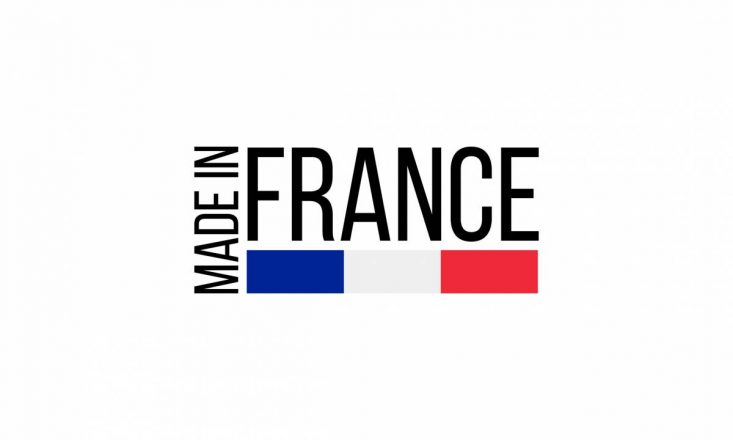The “Made in…” label bears more significant weight than ever in the global marketplace. Beyond simply indicating a product’s place of origin, it has evolved into a potent branding tool that transcends logistics and production procedures.
From an introductory statement of origin to a symbol of quality, artistry, and cultural resonance, the ‘Made in…’ label has changed over time. Consumers today perceive products differently depending on their region of origin, and astute businesses are capitalizing on this phenomenon to establish a distinct character that extends beyond the actual borders of manufacturing facilities.
The narrative is crucial to the “Made in…” branding magic. Brands are increasingly understanding the value of building origin stories around their products. Whether it’s the centuries-old craftsmanship of Italian artisans, the precision engineering of German manufacturers, or the environmentally friendly methods of Scandinavian producers, each ‘Made in…’ tag tells a distinct story that connects with customers on a deeper level.
These stories appeal to consumers’ desire for an emotional bond with the goods they buy. When a product leaves its home nation, it becomes more than just a commodity; it becomes an ambassador for the values and traditions of that country. This emotional resonance develops brand loyalty and fosters a sense of authenticity that customers want in an era of mass production.
Successful national branding has also a significant economic influence that transcends national boundaries. Countries allocating resources to foster robust emblems linked to excellence and novelty tend to occupy favorable positions in international trade discussions. ‘Made in…’ labels and other similar insignia have come to stand for authenticity, trustworthiness, and expertise. Customers get more confident in their purchase choices as a result, which cuts across national borders and impacts global trade balances.
China’s stylized dragon serves as a potent economic messenger. In Chinese tradition, the dragon represents strength, power, and good fortune. When printed on merchandise, it becomes a promotional tool for the Chinese economy.

According to reports, the ‘Made in China’ label and the dragon emblem contribute significantly to the country’s trade surplus. The economic impact is noticeable in industries like textiles and electronics, where Chinese goods are now regarded as innovative and reasonably priced.
The “Swiss Made” label from Switzerland is also a classic illustration of successful national branding. Swiss watches, chocolates, and other products bear the distinct signature of Swiss craftsmanship. This has propelled the country’s economy and established Switzerland as a global model of excellence. The Federation of the Swiss Watch Industry reports that in 2022, watches worth over CHF 21 billion were shipped from Switzerland, with the ‘Switzerland Made’ logo essential to the country’s reputation.

Similarly, ‘Made in Germany’ has long been associated with precision engineering and technological innovation in Germany. German products, from vehicles to machinery, are acclaimed for their quality and longevity, contributing to Germany’s prospering economy. The automotive triumvirate of Mercedes-Benz, Volvo, and BMW, proudly adorned with the coveted “Made in Germany” label, epitomizes precision engineering and automotive excellence. Germany‘s machinery and equipment exports reached €233 billion in 2022, demonstrating the continued global demand for ‘Made in Germany’ items.
The maple leaf, Canada’s national symbol has been effectively turned into a commerce mark of outstanding value. The red and white maple leaf symbolizes Canadian excellence and reliability that may be found on everything from suitcases to bottles of maple syrup.

According to the study, countries with powerful national emblems experience a significant increase in exports and maintain a healthy trade balance. In the case of Canada, the maple leaf has become a symbol of confidence and authenticity, propelling the country’s commodities to unparalleled success in worldwide markets. Trade figures show that when the maple leaf is emblazoned on the packaging, Canadian exports to those nations increased by 22%.
Made in France” is synonymous with timeless elegance and unparalleled craftsmanship. Renowned for exquisite design, culinary excellence, and luxury fashion, products bearing this label embody a rich cultural heritage. From haute couture to fine wines, the “Made in France” stamp signifies a commitment to quality, sophistication, and artistry.

Also Read: Inauguration of Pakistan Pavilion at Expo 2023 Doha
Furthermore, the ‘Made in…’ branding magic is essential in creating quality perspectives. Although industrial methods and technical advances have enabled consistent quality across borders, customers continue to identify regions with higher craftsmanship. This perspective still influences purchase decisions frequently based on previous patterns.
This gives a chance for marketers to capitalize on the positive connotations associated with a given country or region. The ‘Made in…’ logo has become a shorthand for perfection, allowing goods to charge premium prices and stand out in crowded markets. This is true whether it is the Swiss watchmaking precision, the Japanese attention to detail, or the French grace.
However, the ‘Made in…’ branding magic is a double-edged sword. Negative perceptions, such as concerns about labor methods or environmental damage, can ruin a brand’s image. As consumers become more socially and ecologically sensitive, enterprises must ensure that the story behind their ‘Made in…’ designation is consistent with contemporary principles.
The ‘Made in…’ label has transcended its logistical origins to become an effective promotional tool. Countries that invest in cultivating strong national symbols find themselves at the forefront of global trade negotiations. These emblems become shorthand for trust, craft, and authenticity, instilling faith in consumers’ purchasing decisions. As a result, the economic impact is not limited to a single country’s domestic market; it spreads across borders, resulting in a positive trade balance and enhancing its position internationally.
No longer merely a declaration of a product’s origin, it now plays a strategic role in creating a brand and nation’s identity, building emotional bonds with consumers, and affecting their quality opinions. Combined with a compelling national symbol, the ‘Made in…’ label creates a promise that crosses borders, leaving a legacy of economic influence for future generations that will continue to shape the future of international trade as long as consumers value originality and emotional connections in their purchases.
A student of International Relations interested in National Security strategies, with a good focus on Geo-Politics, Foreign Policy, and Public & Cultural Diplomacy.







